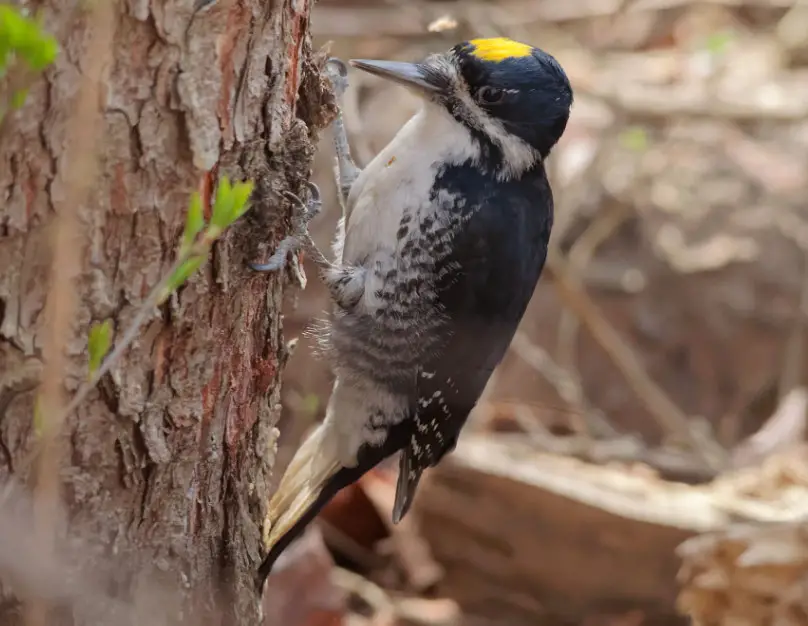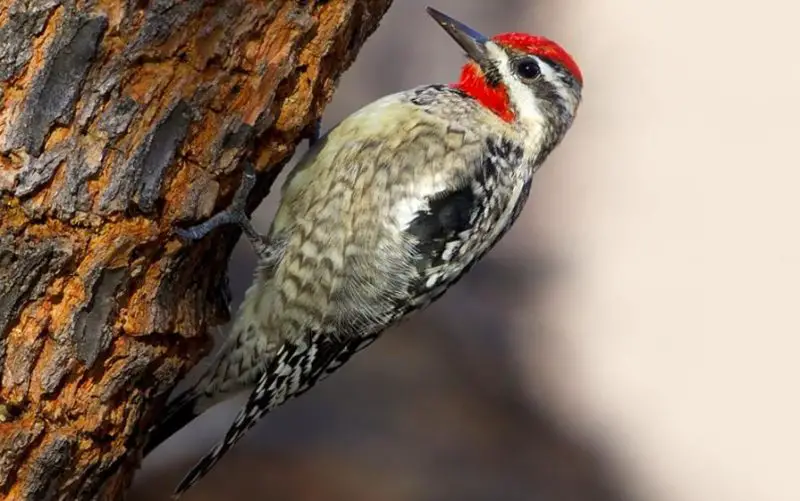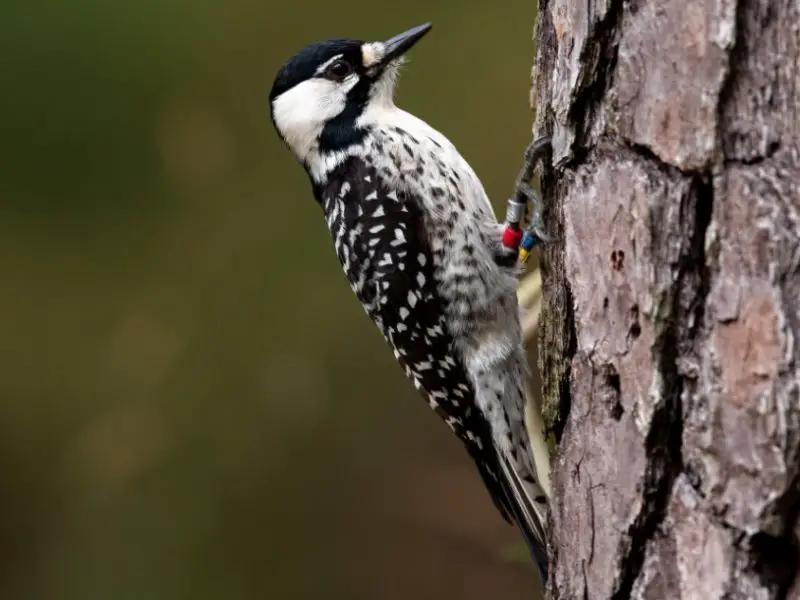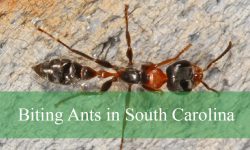Ohio is home to a remarkable variety of woodpeckers, thanks to its rich mix of forests, wetlands, and suburban woodlands. From the soft tapping in city parks to the powerful drumming deep in mature forests, woodpeckers are both heard and seen across the state. Exploring the different types of woodpeckers in Ohio offers a great way to connect with nature and enjoy year-round bird activity.
Some woodpeckers in Ohio stay throughout the seasons, while others only pass through during migration. Each species has its own unique markings, behavior, and preferred habitat. By learning to identify these differences, spotting them in the wild becomes much more rewarding and meaningful.
This guide covers 11 fascinating types of woodpeckers in Ohio, complete with identification tips, habitat details, and fun facts. From the familiar Downy Woodpecker to the elusive Red-headed Woodpecker, you’ll discover how each species contributes to the vibrant birdlife across the Buckeye State.
Different Types of Woodpeckers in Ohio
Downy Woodpecker (Dryobates pubescens)

The Downy Woodpecker is the smallest and one of the most widespread woodpecker species in North America, and it is the most common in Ohio. This petite bird typically measures between 5.5 to 6.7 inches in length with a wingspan of 9.8 to 11.8 inches. It has a white underside, black wings with white spots, a black-and-white striped head, and a distinct white back. Males feature a small red patch on the back of the head, which females lack. The Downy’s bill is relatively short and straight, helping distinguish it from the similar-looking Hairy Woodpecker.
In Ohio, Downy Woodpeckers can be seen throughout the year in a variety of habitats, including deciduous forests, wooded suburbs, orchards, and backyard feeders. They are particularly fond of suet and sunflower seeds, making them a regular visitor to bird feeders during the winter months. These birds are acrobatic and often seen climbing tree trunks or hanging from slender twigs while foraging for insects. Their drumming and high-pitched “pik” calls are also common auditory cues in woodlands and residential areas.
A fun fact about the Downy Woodpecker is that despite its small size, it is surprisingly aggressive when defending its territory. It will readily confront larger birds like starlings and even squirrels. Its ability to thrive in both natural and human-altered environments has made it a familiar and beloved presence across Ohio’s seasons.
Red-bellied Woodpecker (Melanerpes carolinus)

The Red-bellied Woodpecker is a medium-sized woodpecker commonly found across the eastern United States and especially abundant in Ohio. Adults typically measure about 9 to 10.5 inches long with a wingspan of 15 to 18 inches. Despite its name, the red patch on its belly is often faint and hard to see, while its most noticeable feature is the bright red cap extending from the beak to the nape in males, and only from the nape in females. Its back and wings are heavily barred in black and white, while its face and underparts are pale gray.
This species is widespread across Ohio and particularly common in mature deciduous forests, suburban woodlands, and even urban parks. It is a year-round resident and frequently visits feeders, especially those offering peanuts, suet, or sunflower seeds. Red-bellied Woodpeckers are known for their loud, rolling “churr” calls and rapid drumming on trees. They are agile foragers, not only drilling into wood but also catching insects in flight and consuming fruits, nuts, and seeds.
Interestingly, the Red-bellied Woodpecker is a cavity nester and has been observed to occasionally store food in tree crevices for later consumption. Despite their relatively shy nature, their distinctive coloration and vocalizations make them easy to spot and identify throughout Ohio’s woodlands and neighborhoods.
Northern Flicker (Colaptes auratus)

The Northern Flicker stands out among woodpeckers due to its unusual habits and striking appearance. Measuring 11 to 14 inches long with a wingspan of 16.5 to 20 inches, it has a brownish body with black bars on the back and wings, a black bib on its chest, and distinctive facial markings. In Ohio, you’ll typically see the “Yellow-shafted” form, which has bright yellow underwings and tail feathers. Males display a black mustache-like stripe on their faces, while females do not.
Unlike most woodpeckers, Northern Flickers often forage on the ground, probing soil and leaf litter for ants, which make up a large part of their diet. In Ohio, they are commonly observed during spring and fall migrations but also nest locally and can be seen throughout the year, particularly in open woodlands, forest edges, and suburban yards. Their loud, ringing “wick-a-wick-a-wick” call and rhythmic drumming make them easy to locate, even from a distance.
A unique fact about Northern Flickers is their role in aerating soil while hunting ants. They’ve even been known to use tools, such as pieces of bark, to dig. Their combination of terrestrial foraging and colorful flight makes them one of Ohio’s most fascinating and easily recognizable woodpeckers.
Hairy Woodpecker (Dryobates villosus)

The Hairy Woodpecker is a larger, more robust cousin of the Downy Woodpecker, often found in the same habitats but less commonly seen due to its more reclusive nature. Adults measure 7 to 10 inches in length with a wingspan of 13 to 16 inches. It has a clean white belly, black wings with white spots, and a white back, similar to the Downy. However, its longer bill—almost the same length as its head—is a key distinguishing feature. Males have a red patch on the back of the head.
In Ohio, Hairy Woodpeckers reside year-round in mature forests, wooded parks, and nature reserves. They are particularly drawn to large, dead trees where they can excavate nests and search for beetle larvae and other wood-boring insects. While they occasionally visit feeders, they are generally shyer and less likely to be seen in urban environments. Their calls are sharper and louder than those of Downy Woodpeckers, often described as a sharp “peek!”
One fun fact about the Hairy Woodpecker is that it can peck with such force and precision that it creates almost perfectly round holes in tree trunks. These cavities not only serve their nesting purposes but are often reused by other bird species, making the Hairy Woodpecker an important part of Ohio’s forest ecosystems.
Pileated Woodpecker (Dryocopus pileatus)

The Pileated Woodpecker is the largest woodpecker species in Ohio and among the most striking. Measuring 16 to 19 inches long with an impressive wingspan of 26 to 30 inches, it has a crow-like silhouette and a vivid red crest that makes it instantly recognizable. Its body is mostly black with bold white stripes on the neck and face, and white underwings that flash during flight. Males have a red mustache stripe along the cheek, which females lack.
This species prefers mature, old-growth forests and is typically found in large woodlands with abundant dead or dying trees. In Ohio, Pileated Woodpeckers are year-round residents but are more often heard than seen due to their shy behavior. Their call is a loud, wild-sounding “kuk-kuk-kuk” and their drumming is deep, slow, and resonant—like someone striking a hollow log. They excavate large, rectangular holes in trees when foraging for carpenter ants and wood-boring beetles.
A fun fact about Pileated Woodpeckers is that their powerful excavation work creates nesting cavities used by owls, ducks, bats, and other birds. Their presence is considered a sign of a healthy, mature forest. While they are not commonly seen in urban settings, a walk in a quiet woodland may reward you with a glimpse of this magnificent bird gliding between trees.
Red-headed Woodpecker (Melanerpes erythrocephalus)

The Red-headed Woodpecker is a medium-sized woodpecker easily identified by its vibrant, completely red head and contrasting black-and-white body. Adults measure about 7.5 to 9.1 inches in length with a wingspan of 16 to 17 inches. Its back and wings are jet black with large white patches, and its belly is bright white. Juveniles look dramatically different, with brownish heads and less striking plumage until they mature.
In Ohio, this species was once very common but has declined in many areas due to habitat loss, especially the removal of dead trees in open woodlands, pastures, and savannas. It still persists in scattered pockets across the state where snags (standing dead trees) are left intact. Unlike many woodpeckers, Red-headed Woodpeckers catch insects in midair and store food like acorns or insects in tree bark for future consumption. They are vocal birds, often emitting sharp “queer” calls and tapping rhythmically on wood.
A fascinating trait of the Red-headed Woodpecker is its role as one of the few woodpeckers that hoard food, sometimes covering it with bark or leaves. Their population dynamics are highly responsive to changes in tree cover, making them an indicator species for open woodland ecosystems in Ohio and beyond.
Yellow-bellied Sapsucker (Sphyrapicus varius)

The Yellow-bellied Sapsucker is a migratory woodpecker with a unique feeding style and a subtle, beautiful appearance. Adults are around 7.1 to 8.7 inches long with a wingspan of 13 to 16 inches. They have a white belly tinged with yellow, a black-and-white patterned back, and bold facial markings. Males have a red throat and crown, while females have a red crown but a white throat. Their most telltale sign, however, is the neat rows of small holes they drill into trees to feed on sap.
In Ohio, sapsuckers are seen primarily during migration in the spring and fall, although some may breed in the northeastern corner of the state where cool, moist forests persist. They prefer deciduous trees such as birches and maples and can sometimes be found in orchards and forest edges. Their quiet “mewing” calls and irregular drumming patterns help differentiate them from other woodpeckers.
A fun fact about Yellow-bellied Sapsuckers is that the sap wells they create benefit a variety of other animals, including hummingbirds, bats, and insects. These birds are considered ecosystem engineers for their contribution to the forest food web—even if their name is often the subject of humor due to its old-fashioned sound.
Black-backed Woodpecker (Picoides arcticus)

The Black-backed Woodpecker is a rare visitor to Ohio and is not a species commonly seen in the state. It is a medium-sized woodpecker, measuring 9.1 to 9.8 inches long with a wingspan of around 15 to 16.5 inches. As the name implies, it has a solid black back, which helps it blend seamlessly into the charred bark of burned trees. The rest of its body is white underneath with barred black and white flanks, and males display a small yellow patch on the crown.
This woodpecker is typically associated with boreal and montane conifer forests, especially in areas that have recently experienced wildfires. It is a specialist feeder, relying heavily on wood-boring beetle larvae found in dead or dying trees. In Ohio, sightings are extremely rare and usually involve individual birds wandering far from their typical range, likely driven by food scarcity or unusual weather patterns.
A particularly intriguing aspect of the Black-backed Woodpecker is its adaptation to post-fire habitats. Unlike most birds that flee burned areas, it moves in to take advantage of the insect boom that follows. Because of this unique behavior, it is often considered a symbol of ecological resilience and an indicator species for forest regeneration.
Red-naped Sapsucker (Sphyrapicus nuchalis)

The Red-naped Sapsucker is a striking, medium-sized woodpecker that closely resembles its eastern cousin, the Yellow-bellied Sapsucker. It measures about 7.5 to 8.3 inches in length with a wingspan of roughly 16 inches. Its black-and-white patterned plumage is accented by a bold red patch on the crown and a red nape that gives the species its name. Males and females both have red throats, though females may show more white near the lower throat. Fine black and white barring decorates their flanks, and a white vertical wing stripe helps distinguish them from other woodpeckers.
This species is native to the Rocky Mountain region and parts of the western United States and is not typically found in Ohio. However, there have been a few rare instances of vagrant individuals appearing in the state, likely during migration or due to navigational errors. When present, they are usually found in wooded areas and may be mistaken for Yellow-bellied Sapsuckers without close inspection. Like other sapsuckers, they drill horizontal rows of sap wells in tree bark to feed on both sap and the insects it attracts.
A fun fact about the Red-naped Sapsucker is its hybridization zone with the Yellow-bellied Sapsucker, especially in areas of the Great Plains. These hybrids can make identification difficult and provide insights into the evolutionary history of sapsuckers. Though extremely rare in Ohio, any confirmed sighting is considered highly notable by local birders and ornithological records.
Red-cockaded Woodpecker (Dryobates borealis)

The Red-cockaded Woodpecker is a small and rare species with distinctive features and highly specialized habitat needs. Measuring about 7.9 to 9.1 inches in length with a wingspan of around 14 inches, it has a black-and-white barred back, white cheeks, and a black crown. The “red cockade”—a small streak of red behind the eye—is typically visible only on adult males and is quite subtle. Its understated coloration contrasts with the bold plumage of other woodpeckers, making it harder to spot in dense pine forests.
This species is listed as endangered and is primarily found in the southeastern United States, where it depends on mature, living pine trees—especially longleaf pine—for nesting and roosting. In Ohio, Red-cockaded Woodpeckers are virtually absent, with no verified breeding populations and only hypothetical records of vagrants. Any such sightings are often questioned or considered possible misidentifications. The species has suffered greatly due to habitat loss, particularly the reduction of old-growth pine ecosystems.
A remarkable trait of the Red-cockaded Woodpecker is its cooperative breeding system, where family groups work together to raise young and maintain cavity trees. These woodpeckers carve their nesting holes in living pines and coat the entrances with resin to deter predators like snakes. Their social structure and habitat specificity make conservation efforts both critical and complex, contributing to their rarity across much of their historical range.
Ivory-billed Woodpecker (Campephilus principalis)

The Ivory-billed Woodpecker is the most legendary and elusive woodpecker species in North America. It is—or was—an enormous bird, measuring up to 20 inches in length with a wingspan of 30 inches, rivaling the Pileated Woodpecker in size but distinguished by its ivory-colored bill and extensive white markings on the wings and back. Males also sport a brilliant red crest, while females have an all-black crest. The combination of striking coloration and massive size made it a truly awe-inspiring presence in its southern swamp habitat.
Historically, the Ivory-billed Woodpecker inhabited bottomland hardwood forests in the southeastern U.S., particularly in Louisiana, Florida, and South Carolina. Logging and habitat destruction throughout the 19th and early 20th centuries decimated its population, leading to its presumed extinction by the mid-1900s. While there have been unconfirmed sightings and reports, no irrefutable evidence of a surviving population has emerged in decades. It has never been considered part of Ohio’s established avifauna, and any historical mentions are speculative at best.
A haunting and captivating fact about the Ivory-billed Woodpecker is its symbolic role as the “ghost bird” of American ornithology. Efforts to locate surviving individuals have spanned decades and inspired documentaries, expeditions, and passionate debate among experts. Though officially listed as “Critically Endangered” or “Possibly Extinct,” it continues to capture the imagination of birders and naturalists worldwide, representing both the fragility of ecosystems and the enduring hope for rediscovery.






